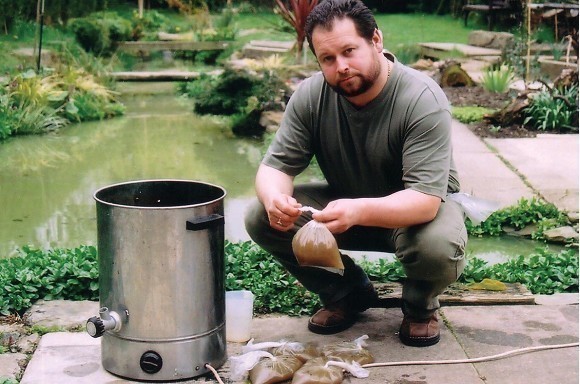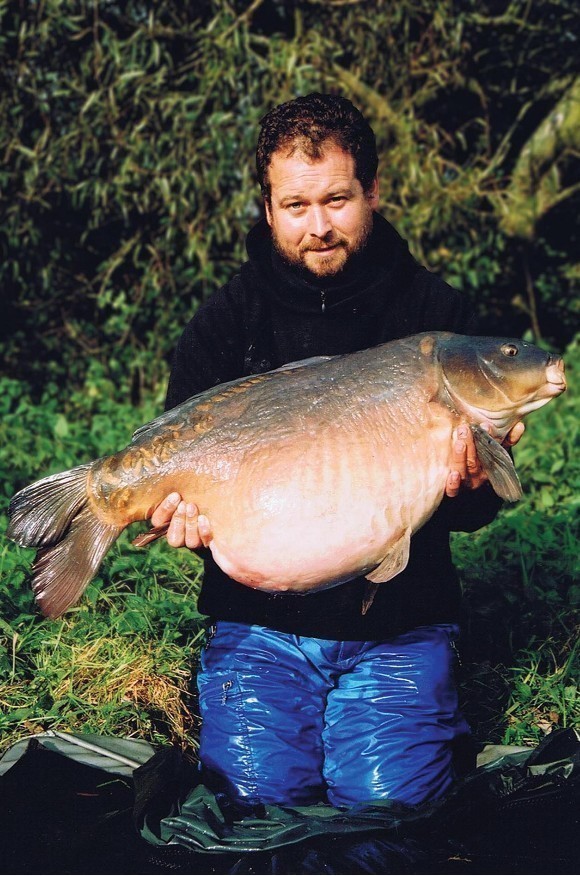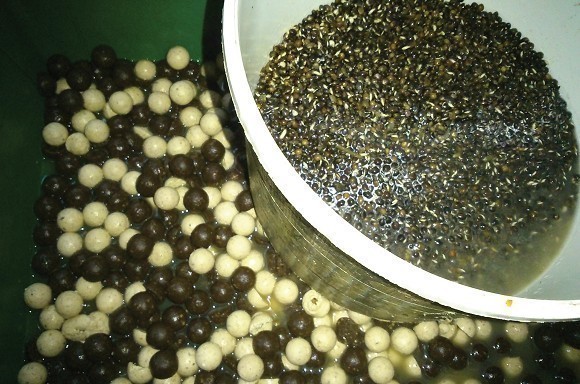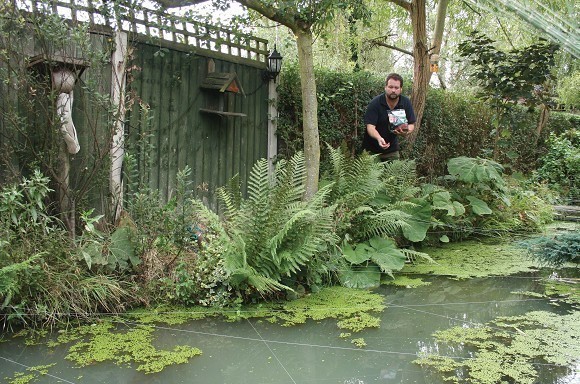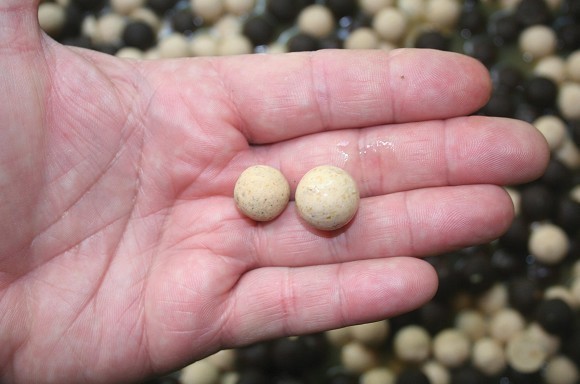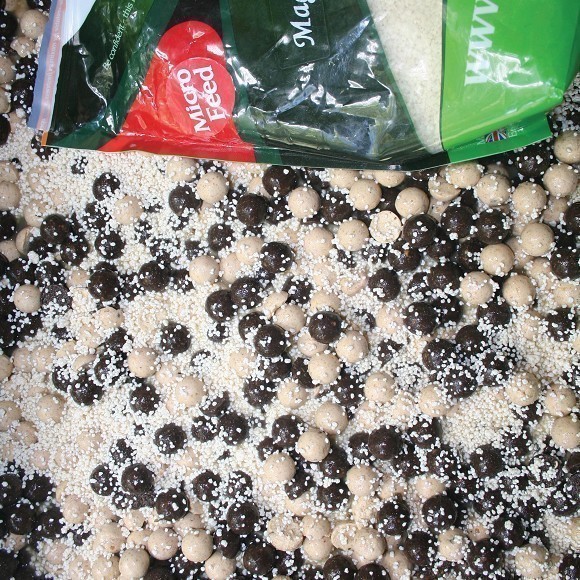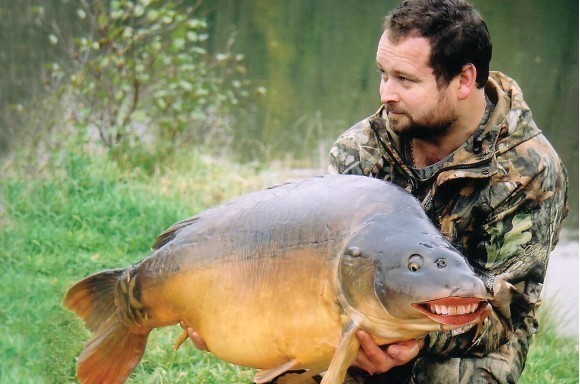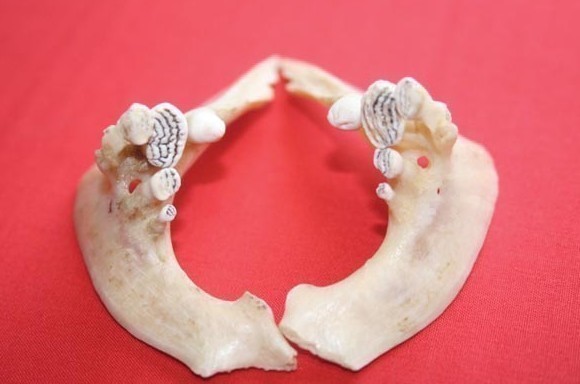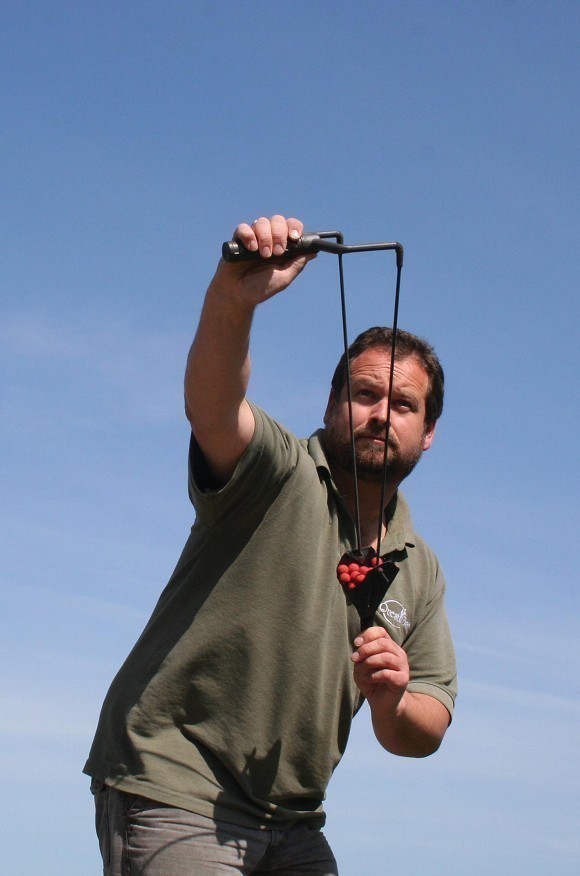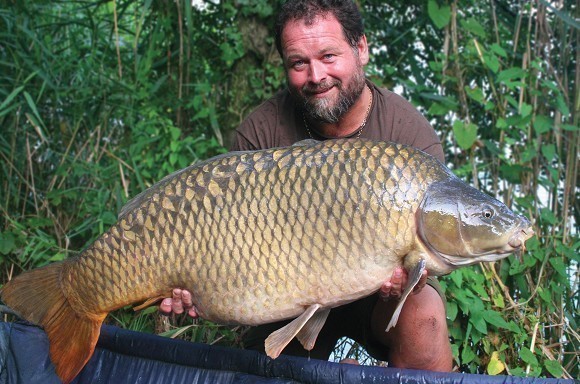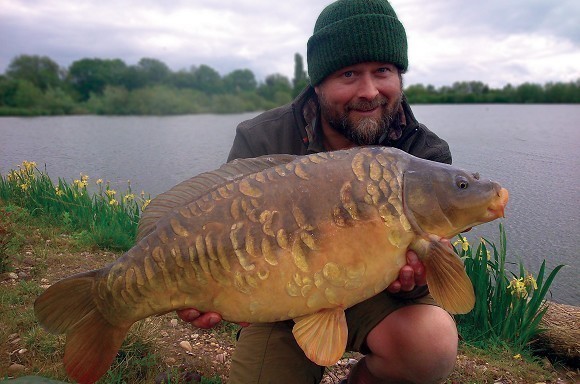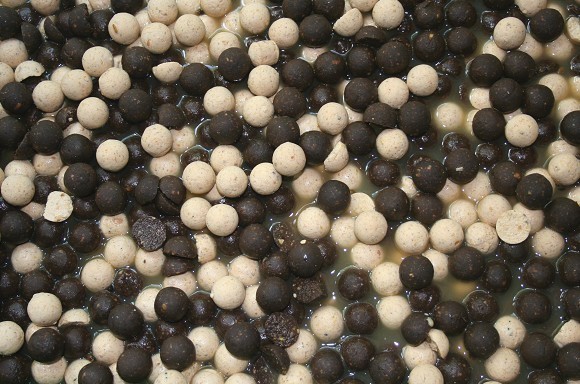
Shaun Harrison's epic bait trick: Rehydration
Why you should rehydrate your baits...
In a recent Rotary Letter, Terry Hearn wrote: “Shaun Harrison wrote a brilliant piece on this subject some years ago, in which he encouraged anglers to re-hydrate their baits. I remember that he really rated hemp juice, and if you read Shaun’s piece it was written in such a way which left you in no doubt of their effectiveness. I’d love for him to revisit the subject.”
Well ‘some years ago’ was actually the turn of the century some 15 years ago. I remember writing the piece and not being too sure whether to let what was my big edge out of the bag or not. Others had become aware of what I was doing with bait and having come up with a fair few things over the years that hadn’t been written about before and then seeing someone else claim it as their own, I decided to throw caution to the wind and tell the world what I was doing. After all, it is such a lot of messing around that I knew full well that most would read but would never actually go to the trouble of enhancing and improving their baits in the way that had been so successful for me, and in a way that was possible for all.
I remember being at one of the carp shows and having several anglers who I had utmost respect for, as well as some I didn’t know, stopping by to thank me for that piece. Terry Hearn had been one of them so it was a nice feeling when I read the words I started this piece with, for 15 years on it hadn’t been forgotten. Never before in the many articles I have written over the past 30 years of putting ink on paper had I had so much feedback as I did from that piece. I guess a lot of anglers come and go, so there will be a lot who never saw the first one, or indeed the ‘similar ones’ written since, but enough of all of that head-swelling stuff, I suppose first I should give a quick bit of history to what Terry was talking about and lead it up to where I am at today with it.
So the evolvement of my re-hydrated baits, or as I now prefer to call them ‘washed in’ baits moved along like this…
1: At the time fresh frozen boilies were air-dried to solid dry bullets, properly dried so no moisture was left at all. Once in this state, water was added to revert them back to a normal boilie. This I originally did to keep baits fresh for a week away and allowed me to run a conveyor system through the week to keep me in fresh re-hydrated bait all week. It is a method I have also used when flying to my destinations when weight allowances are rather tight. Removing all the moisture from the baits allowed me to take much more bait.
2: Back in the UK and back onto the mega silty mere which is commonly known as The Mangrove I started to experiment further by adding more liquid to the air-dried baits so that they could take no more liquid in. This combated the silt and totally turned my angling there right around. My baits only smelt and tasted like bait, not silt stained bait.
3: The re-hydration techniques were so successful for me that my naturally inquisitive and experimenting mind started to think of things other than straight water to add to the baits. The most successful ingredient I used was the water from freshly cooked hempseed. Baits re-hydrated in this really were incredible during the warmer months. Drop one in the edge and you could see them pumping hemp juice for ages. Seeing the reaction of the carp to a bed of these all doing the same made it so that I felt totally lost fishing dry baits from a bag. The take-rate had been phenomenal compared to my ‘normal boilies’.
This was really the stage I had got to in the year 2000, when I eventually put words on the page and shared my findings. At the time I was content to simply keep on with the same bait and methods I had come up with by then. After all, if it isn’t broken…
The switch over
Well, when I wrote the original piece, shelf-life bait technology seemed to be well and truly in the dark ages, with companies having to rely heavily upon preservatives to prevent certain ingredients going off. At the time, after bad experiences (indicators rarely moving) with shelf-life baits I wouldn’t touch them so relied completely on fresh frozen baits.
Here I am now in a total turn around scenario in as much as I now prefer and have more confidence in stable shelf-life baits over fresh frozen baits which obviously only have a very short period of optimum attraction. This is obviously a totally different subject but after starting Quest Baits I made a point of talking to a lot of people within the food industry and soon found that I could stabilise a lot of ingredients for quite a long period of time without actually using preservatives. Some ingredients couldn’t be slowed down far enough in deterioration so I simply chose not to use these. But suffice to say, once I found I could really slow down the deterioration of baits, without the preservatives that I knew carp didn’t like the taste of, I never looked back and never used a frozen bait again. After all, there is very little in our own food chain that has not been stabilised to some extent, even fresh meat and bags of salad have had their deterioration slowed.
Anyway, the above is relevant to my ‘washing in/re-hydrating’ techniques. Nowadays I use shelf-life baits rather than first having to totally air-dry freezer baits in order to basically slow the going off process down so I could work with them.
Unfortunately so many anglers get washed-out baits mixed up with my washed-in baits. I add liquid to my bait and I’m very careful not to wash anything out that may have been in the bait in the first place. Everything I add to bait is added because the bait benefits from it, and more importantly to me, it makes my bait a little different. If I am to wash baits out, what is the point of adding those bits being washed-out in the first place?
So why add extra?
Simple: it allows me to make my baits a little different to the angler in the next swim. The thought of using something identical to the next person makes me feel like I am simply in a lottery awaiting my turn. Remember that everyone can buy the baits I use as I sell them, so it is nice to still be able to make them different to the person next door should they decide to cash in on my baiting up etc. Besides, I want my bait to have that edge, the more reason for the fish to drop down on my bait instead of the bait next-door.
Adding liquid to a boilie has two major benefits. Firstly, it swells the bait and opens the sealed pores of the bait to allow the important bits in the bait that you can’t see to start to work and leak out of the bait quicker than they can do from a boilie straight out of the bag, it’s a simply case of physics.
The other major advantage is that by filling the baits with liquid, it reduces the amount of silt smell they can take on. Every boilie ever made, be it fresh or preserved is dried a little which in effect shrinks it a little. As soon as the bait is removed from boiling water the swollen baits shrink. So, when cooled and reintroduced to liquid they will absorb whatever they are sat in. If they are sat in silt, then the baits will absorb silt. If they are sat near a dead fish, the baits will take on the surrounding smell and so on.
If the baits are full and swollen before being used, then they will not only be heavier for easier catapulting but will also start pumping their attraction straightaway rather than taking on the surrounding smell and then eventually leaking out a subtle silty/bait signal.
Now don’t get me wrong, carp love silt, they are happy with their heads buried right in certain make-ups of silt, but surely it makes sense to make the bait easier to find rather than masking it slightly with a silt smell? Judging by the results I have had on the ‘full and swollen baits’ I am left in no doubt whatsoever the carp prefer them this way, or possibly find them easier this way, but personally I am sure they prefer them like this which leads naturally onto my next discovery.
Super soft baits
It isn’t just the improvement in taste and flavour leakage that you gain by giving the baits a drink, I truly believe old carp much prefer to eat soft bait rather than hard bait. I am 100% convinced that they suffer toothache the same as the rest of the animal world when they get old and wear their teeth down. The teeth of a carp look like ours and many other animals in as much as they are enamelled. Imagine 50 years of crunching up snail and mussel shells etc. you can’t tell me they don’t wear them down preventing them from eating too much hard (and dry) bait once they are older.
Soft bait oozing attraction is a much better proposition than hard, dry bait. In fact, when you think about it, they never eat anything dry in the wild at all. Watch carp eating dry pellets for instance, I was watching a video the other day of them trying to eat some 16mm ones straight after being introduced to them. Yes, they were attracted to them and turned on by them, but they would take them and spit them out, yet once softened up they gorged themselves on them, which goes some way to showing why my findings at the Mangrove were as they were. They would get on my soft and swollen baits immediately, yet prior to using them I was usually 10hrs into a session before the first proper takes would come. So, rather than any washing-out of my baits it was totally the reverse, my bait became customised and supercharged!
Playing around
As is the norm with me, I start to get a little bored using the same things and during that period just after the turn of the century Quest Baits was beginning to form which found me playing around with a lot of different aspects of baits. Perhaps I should simply have sold ready re-hydrated and hemp juiced to the max boilies. But, with the labour time involved, the costs would have been a little silly. People would certainly have been amazed how much action they were getting, though.
Just to put things into perspective, when I first joined the Mangrove, due to work commitments I would arrive around 8pm on a Tuesday and leave around 6am on a Thursday in order to get back to work. I only ever had one day off at a time. Before I used the re-hydrates, the earliest I caught would be first light on the Wednesday. Once I got the re-hydrates in there I often had fish before I had completed setting up. They made that much difference.
Well the years have trickled by, and yes, I still do use baits straight from the bag at times, but if I find myself going somewhere special or if I feel I need to ‘up the game’ a little, the washing in process is used every time.
All these years on and I am still struggling to find anything that works better than the hemp juice in the warmer months, some things come close and some are probably as effective, but as to being considerably better, then not in the warmer months, but during the colder months there are lots of things.
Your mind really is the only limit as to how far you can take this in regards to what you can add to your bait. Basically, anything that will dissolve in water can be added. For a start, there are countless ingredients sat on the supermarket shelves from dilute drinks which can be added to water, soups, yeast spreads, Bovril, various salts, sugars, hot drinks, sauces and so on.
Move away from the supermarkets and a lot of things commonly used in bait can be dissolved into water and then added to the bait. Terry Hearn mentions doing well with Green Lipped Mussel Extract soaked into his baits. Now carp love this and really the only factor that governs the amount which can be used in the bait is cost! There are lots of other meat and seafood extracts that can be used in the same way.
You see you could be using a ready-made bait but also boost certain ingredient contents simply by giving the baits a drink.
Obviously the thinner the liquid, the quicker it will soak into the bait. The secret, however, is not to add so much liquid that you start to exchange what was in your bait in the first place for what you are trying to wash in. It is impossible for me to tell you how much liquid each type of boilie will drink as different base ingredients are more absorbent than others. When I was really going to town with the hemp juice in fully dried bait I was getting a pint of hemp juice into two pints of boilie! Now that was a major coup in its own right. Carp love hemp, we all know that, but it is an ingredient that is so difficult to work with in a boilie due to the high oil content. Yes, you can buy hemp by-products such as hemp meal and hemp oil but these simply are not the same as pure hempseed and the ‘stock sauce’ you produce whilst cooking it. I guess a lot of readers won’t realise that hemp meal and the like is generally produced from the stalk and leaves, not the precious little tasty seeds.
So by adding a pint of the juice to two pints of dried boilies I was using boilies probably more heavily laden with that great hempseed attraction than others had before. By adding ingredients after the bait is produced it opens the door for lots of things to be used that couldn’t be used in quantity before, so long as you can get it down into a useable liquid form.
Some ingredients including a lot of the synthetic artificial flavours that many still seem to want to use can burn away and evaporate in boiling water, so you are better adding these things after the bait is made anyway.
As I touched upon above, I very much prefer the stability of shelf-life baits for my own angling these days so no longer go to the trouble of totally air-drying my bait. Usually on a Wednesday or Thursday morning I will be starting to give my baits a drink ready for the weekend. By the Friday morning if there is liquid still there, I will add a little pellet to the baits to soak this up so that everything I have added to the bait is still there within my bait and nothing is taken away.
The downsides
Well, after all the pointers as to why you may benefit from giving your baits a drink I suppose I should quickly mention the down sides to doing this of which I can only think of three.
1: You have to start to prepare your bait a couple of days before you are ready to go fishing.
2: Forget the throwing stick, the soft baits will explode. This to me is no big deal at all as most of the waters I fish, as soon as a stick is used, the lake gulls appear from nowhere; particularly now that so many use the extra loud carbon sticks. Since cutting my elbow off last century I can no longer use a stick but it hasn’t stopped me catching a few by baiting with the catapult and the gift from above: the Spomb.
3: Nuisance fish find the softer baits easier to peck away at and eat. I actually welcome this as there is no bigger stimulation for a carp to feed than seeing other fish feed and having all those tiny crumbs falling from their mouths and gills colouring the water up.
So there you have it. You could make what is already a brilliant bait, just a tad better.



